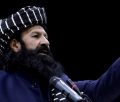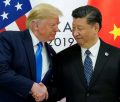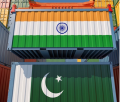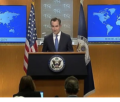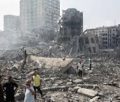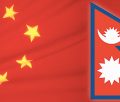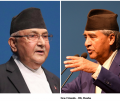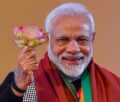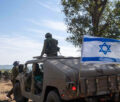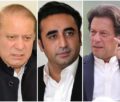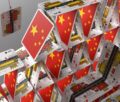Where is the fountainhead of jihad?

REVIEWER: Dr Mohammad Taqi*
The general elections in Pakistan scheduled in ten days from now are easily the bloodiest in the country’s history. The secular parties like the Muttahida Qaumi Movement and the Pakistan People’s Party have come under deadly attacks by the jihadists. But the Tehrik-e-Taliban Pakistan (TTP) has literally unleashed a war on the liberal Pashtun Awami National Party, killing scores of its leaders and cadres. The TTP is supposedly the ‘bad’ Taliban, an arbitrary distinction applied by many, but most importantly, the Pakistani security establishment. The ostensibly ‘good’ Taliban are the groups not directly attacking the Pakistani interests and oriented towards Afghanistan and the US and allied forces stationed there.
The capacity of the TTP to strike at will and with ferocious impunity, with an abysmal response from the Pakistani state suggests that the outfit enjoys an ideological strategic depth within the country, where Punjab-based parties like the Pakistan Tehrik-e-Insaaf and Nawaz Sharif’s Pakistan Muslim League and the religious parties across the board are reluctant to even condemn its terrorist activities. Perhaps more important is the logistical sanctuary that the TTP has maintained in the North Waziristan Agency (NWA) courtesy the Jalaluddin Haqqani terrorist network (HQN) to train and plan for the operations elsewhere in Pakistan. The current work by Vahid Brown, a specialist in the history of Islamist militancy and author of Cracks in the Foundation: Leadership Schisms in al-Qaeda and Don Rassler, of the South Asia research programme at the Combating Terrorism Center (CTC) at the US Military Academy, meticulously describes the identity and evolution of the HQN and how the jihadist-terrorist network came to enjoy de facto rule over large swathes of the Pakistani tribal territory of the NWA.
While the HQN has been previously been called the ‘veritable arm’ of the ISI, the authors state that the HQN “is an Afghan and Pakistani insurgent group whose senior leadership structure is hierarchical and mostly familial in nature.” Correctly assigning the HQN’s dual identity is key to the authors’ remarkable scholarship that approaches the network’s nexus position and role as a group that did not operate merely as a local sidekick to the Arab al Qaeda but as a major enabler of global terrorism and actually helped shape al Qaeda and provided it with operational support, logistics and battleground training. Brown and Rassler describe in fascinating detail the unique role the HQN has played “in the region due to its interpersonal relations, geographic position and strategic approach” spanning more than 30 years and that “part of the network’s power also stems from its close ties to Pakistan’s Army and its intelligence agencies, which have historically used the group as a proxy to exert influence in Afghanistan and to mediate disputes in Pakistan’s FATA.” The book details the ideological and logistic ties between the HQN and the TTP to the extent that Siraj Haqqani and Qari Hussain (killed in a drone strike in 2010) jointly ran the suicide bomber training camp at Shawal near Miranshah in NWA. The deep ties between the HQN and the TTP raise a question about Pakistan consistently dragging its feet to act against the former while fighting the latter.
The title of the book is actually the name of the magazine Manba al-Jihad, literally meaning the fountainhead of jihad, that the HQN published in Pashto and Arabic in the 1980s and 1990s, the 1000-page record of which along with the written communications by the group’s members and leaders, media productions by its studio (also called Manba’ al-Jihad) and the articles and correspondence by al Qaeda leaders and operatives forms the backbone of this painstaking research. The HQN-related primary sources archive thus assembled by the authors is a first and describes the HQN as a brand distinct from al Qaeda and the Taliban though overlapping and sharing with both at times. The authors write that from its bases in the Loya Paktia — Khost, Paktia, and Paktika — in Afghanistan and NWA in Pakistan “the network has provided a variety of state sponsors, private donors, and entrepreneur revolutionaries with a particularly valuable resource in the global economy of conflict: a platform for delivery of violence.” To understand the HQN’s rise to its preeminent position of power in the conflict economy the book ‘unpacks’ the three themes in its title, viz the fountainhead, jihad and nexus in extensive detail.
Part one of the book, including the introduction, is written by Vahid Brown and deals with the ‘Establishment and Historical Evolution of the Haqqani Nexus’ and its development up to September 11, 2001. The second part, including the conclusion is written by Don Rassler, and focuses on the network’s position in the post-9/11 world by analysing and explaining “through the lens of the group’s value proposition to its local, regional and global partners”, i.e. “the Taliban and other local insurgents, the Pakistani state and its ISI Directorate, and al Qaeda and the global jihadists”, respectively. As the 2014 US drawdown is approaching the book asks, “What is at issue is how the ISI is engaged in Afghanistan and the role it plays as an enabler of groups that operate with al Qaeda…(the support) being deployed against the Pakistan’s stated ally — the United States.” The authors point out that “Pakistan’s favoured Afghan proxy is also the very same actor that has served as al Qaeda’s primary local enabler”, and that “it is unlikely that Pakistan has not been aware of this.” An old picture of the HQN’s Zhawara base in the book shows an arrow pointing to the camp’s gates, which reads: “Iman, Taqwa, Jihad fi-sabil-illah” (Faith, piety and war in Allah’s path). Interestingly, it is the same motto as the Pakistan Army’s and begs the question where exactly is the fountainhead of jihad?
In the last two months books by Vali Nasr, Barnett Rubin, Peter Bergen and Mark Mazetti have come out, which deal wholly or in part with Afghanistan and Pakistan. It is surprising that while these works, some of which carry rehashed and outdated materials, got a lot of attention, the monumental effort by Brown and Rassler — though sold out now at many outlets — has not yet drawn the analyst spotlight it rightfully deserves. The meticulously sourced and indexed material is exceedingly readable but given the wealth of data presented, a searchable electronic edition would be highly desirable.
The Fountainhead of Jihad, barring the perpetuation of certain stereotypes about the Pashtuns, is a tremendous compendium of information on local, regional and global dimensions and designs of the HQN known to date. The book has serious policy implications as 2014 approaches and the TTP’s war on Pakistan’s secular parties has intensified. While the authors have opted not to venture into policy prescriptions, any keen observer of Afghanistan and Pakistan affairs cannot afford to miss the treasure trove of information on a shadowy HQN that operates, paradoxically, in broad daylight mostly out of its safe havens in NWA.
( *This review first appeared in Pakistan daily, Daily Times. It is republished here with the permission of the writer)
-
Book Shelf
-
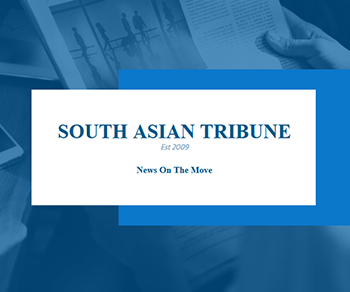 Book Review
DESTINY OF A DYSFUNCTIONAL NUCLEAR STATE
Book Review
DESTINY OF A DYSFUNCTIONAL NUCLEAR STATE
- Book ReviewChina FO Presser Where is the fountainhead of jihad?
- Book ReviewNews Pak Syndrome bedevils Indo-Bangla ties
- Book Review Understanding Vedic Equality….: Book Review
- Book Review Buddhism Made Easy: Book Review
- Book ReviewNews Elegant Summary Of Krishnamurti’s teachings
- Book Review Review: Perspectives: The Timeless Way of Wisdom
- Book ReviewNews Rituals too a world of Rhythm
- Book Review Marx After Marxism
- Book Review John Updike’s Terrorist – a review
-
-
Recent Top Post
- NewsTop Story Record Pentagon spending bill and America’s hidden nuclear rearmament
-
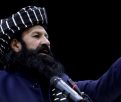 NewsTop Story
Taliban Suffers Devastating Blow With Killing Of Minister
NewsTop Story
Taliban Suffers Devastating Blow With Killing Of Minister
-
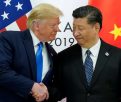 China NewsCommentaries
Reality Shadow over Sino-American ties
China NewsCommentaries
Reality Shadow over Sino-American ties
-
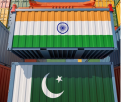 CommentariesNews
Ides of trade between India and Pakistan
CommentariesNews
Ides of trade between India and Pakistan
-
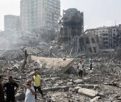 CommentariesTop Story
Palestinians at the cross- roads
CommentariesTop Story
Palestinians at the cross- roads
-
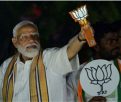 CommentariesTop Story
While Modi professes concern for the jobless, “his government’s budget escalates class war”
CommentariesTop Story
While Modi professes concern for the jobless, “his government’s budget escalates class war”
-
 CommentariesNews
Politics of Mayhem: Narrative Slipping from Modi ….?
CommentariesNews
Politics of Mayhem: Narrative Slipping from Modi ….?
-
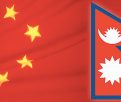 Commentaries
Impasse over BRI Projects in Nepal
Commentaries
Impasse over BRI Projects in Nepal
-
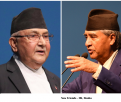 CommentariesNews
Yet another Musical Chairs in Kathmandu
CommentariesNews
Yet another Musical Chairs in Kathmandu
-
 CommentariesTop Story
Spurt in Anti-India Activities in Canada
CommentariesTop Story
Spurt in Anti-India Activities in Canada
AdSense code




